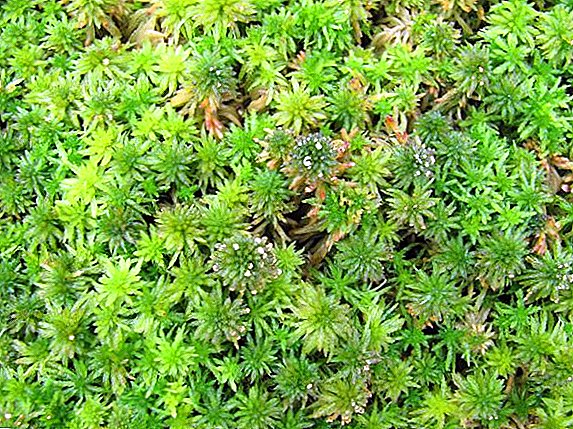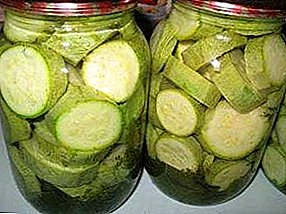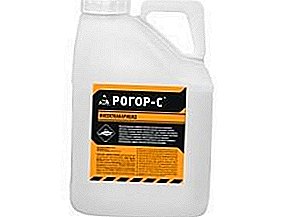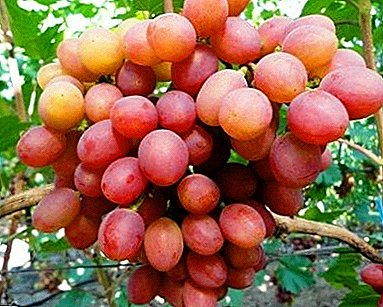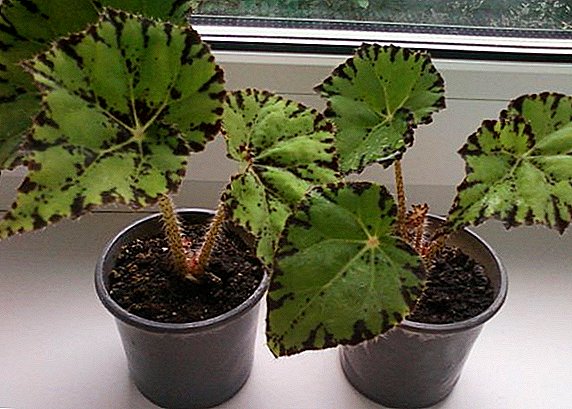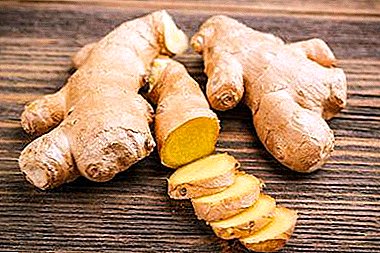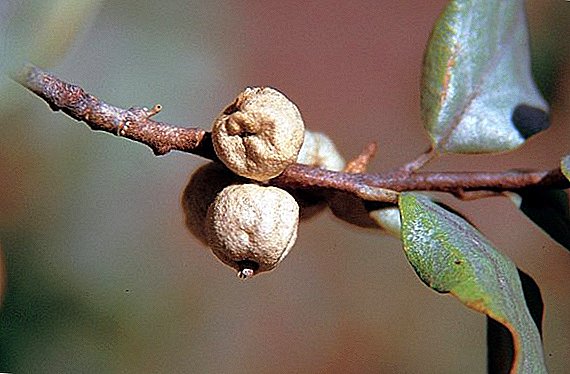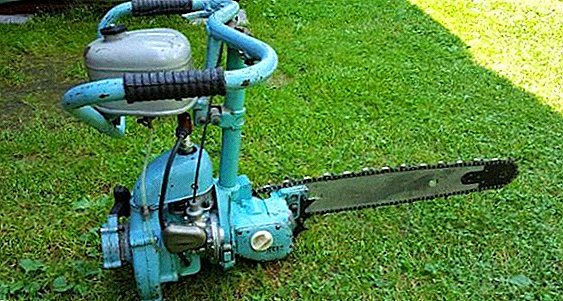 Leningrad Oblast is the northernmost region in which stone fruit can be cultivated.
Leningrad Oblast is the northernmost region in which stone fruit can be cultivated.
It should be borne in mind that in order to get a decent harvest, you can only take special varieties intended specifically for the northern regions.
This article will tell you about which varieties of plums are suitable for cultivation in the north-western regions, as well as about the nuances of tree care.
The best varieties for the Leningrad region
For the north-western region, including the Leningrad region, adapted such varieties of plums:
- "Alenushka". Early ripe samobzplodny grade. It is a medium-growth tree, growing to 2-2.5 meters. Fruits are large (30-35 g), spherical, dark red in color, the bone detaches poorly. Pollinators - varieties of Chinese plum and cherry plum. The weakness of the variety - leaves and young shoots are often affected by aphids.
- "Red Ball". Early ripe early plum. Fruiting begins within 2-3 years after planting. The tree is medium, almost 2.5 meters high. Fruits are round, large (about 40 g), red in color with a bluish bloom. Stone separates hard. The variety is characterized by good winter hardiness and immunity to asthenopiasis.
- "Renklod collective farm". Medium late self-infertile form. Fruits are medium, about 25 g, greenish-yellow, in mature fruit the bone separates well. The tree is medium thick. Frost-resistant, high-yielding, resistant to various diseases.
- "Skoroplodna". Early ripe samobesplodnaya plum. The tree is low. Fruits - spherical, fragrant, medium-sized (20-25 g), with bright red skin. Frost resistance and yield are good, resistance to diseases is relative.
- "Tula black". Medium late self-infertile form. The tree is low. Fruits - medium (23-25 g), oval, with dark blue, almost black skin. Stone moves away from the pulp well. Frost resistance and high yields.




Did you know? Probably, the wild precursor of domestic plum (Prunus domestica) arose as a result of the cherry plum and thorns crossing.
Where to plant on the site
All northern varieties of plums are well cultivated on the top of the slopes, preferring drained soil. In this case, it is advisable to choose warmer, well-lit places warmed by the sun, protected from cold winds, with a deep (at least 2 meters) groundwater storage.
Important! You can not plant a plum in the lowlands, where water accumulates, and in winter a lot of snow is collected.
The quality of the soil plays an important role: it is preferable to choose fertile areas with a lighter composition, with a sandy or sandy-pebbly underground layer.
How to choose a good seedlings when buying
The choice of seedlings is a crucial moment on which depends how the tree will take root and whether it will bear fruit further.
Therefore it is necessary to consider the following rules:
- the seedling should have 3-5 developed roots. The core must be at least 25 cm in length;
- planting material can be grafted and rooted own. The latter option is better, since such shoots are able to recover in case of frosting;
- varieties are self-fertile and self-fruitful. Last to get the harvest will need the right neighbors;
- it is better to buy planting material in a specialized nursery. It is highly undesirable to buy seedlings on the market;
- better to buy trees at the age of 2-3 years;
- roots should be free of mold, putrid marks and damage;
- the barrel should not be curved. Smooth shtamb - a sign of a healthy seedling;
- the crust should be holistic, without frostbite, burns and other damage.

Did you know? Queen Elizabeth starts breakfast with two plums.
How to plant
Plum is not considered a capricious crop, but some planting rules do exist.
Timing
Many gardeners argue that you can plant a plum in the fall and in the spring. But, considering the fact that plums are a heat-loving plant, the best time to plant is in early spring, before the buds have blossomed, 3-5 days after the ground has completely thawed.
If you plan to plant a sapling in the fall, it should be done at least 1.5-2 months before frost.
Soil preparation
Place for planting plums should be prepared in advance for a few weeks. To begin with, the soil within a radius of 2 meters from the intended landing site is carefully dug up, removed weeds, fertilized.  Next, dig a hole, mined ground is mixed with humus, wood ash and poured on the bottom.
Next, dig a hole, mined ground is mixed with humus, wood ash and poured on the bottom.
Important! It is impossible to pour fertilizer directly into the pit to stimulate the growth of branches - they can burn the roots, which will lead to the death of the seedling.
Stepwise landing process
The plunge well must be near 50-60 cm deep and 80-90 cm wide.
Depending on the selected variety, the distance between the future trees will be different. For wide, spreading crowns, a distance of about 3 meters is needed, and for trees with small crowns, 1.5 meters is enough. If trees are placed in several lines, then the distance between the rows should be 4-4.5 meters.  Pit for planting dug for 2-3 weeks. Immediately, a support for the garter is driven into it, preferably from the north side of the future tree, and the distance from the stake to the seedling should be 15 cm.
Pit for planting dug for 2-3 weeks. Immediately, a support for the garter is driven into it, preferably from the north side of the future tree, and the distance from the stake to the seedling should be 15 cm.
Top dressing is added to the pit (total mineral or humus). The nutrient mixture is mixed with the soil and left for a while, so that the soil has settled.
Did you know? In England, plums are so fond that they call them various institutions. And the favorite bar of W. Churchill was "Yellow Plum" - "Yellow Plum".
Right before planting on the bottom of the pit, they pour earth on a hill, put a seedling on it and evenly straighten the roots. Then they are covered with soil. During the process, the seedling is periodically slightly shaken to avoid the formation of empty space, and the ground is evenly distributed. Light tamping is acceptable.
Video: an example of planting a plum sapling on a hill
The sapling should not be deepened - the root neck should be 3-4 cm higher than the ground. When the soil is set, the tree will find itself on a level with the ground.
After the tree has already been planted, the stem is tied to a support. It should be done in such a way that the garter would not injure the plum bark afterwards: it is better to choose soft materials (hemp rope, elastic twine, etc.).
At the end of planting, the seedling is watered, and the near-stem zone is mulched with sawdust or peat.
Learn more about the agronomic approach "soil mulching".
How to care
The more attention you give to the tree, and the more competent you are to take care of, the better the drain will feel and thank you for the generous harvest.
Watering
Although the plum does not like stagnant moisture, it belongs to the moisture-loving plants. Drying is more dangerous for this tree than frost.  In hot weather, the tree is watered every 5-7 days at the rate of 4 buckets of water for the young and 6 buckets for the mature tree.
In hot weather, the tree is watered every 5-7 days at the rate of 4 buckets of water for the young and 6 buckets for the mature tree.
Important! If the fruits crack, this is a sign of a lack of moisture, and if the tip dies off and the leaves turn yellow, this is an excess of moisture.
Top dressing
It almost instantly reacts to the absence of the necessary plum elements: when there is a nitrogen deficiency, the tips of the leaves turn yellow, when there is a lack of phosphorus, they turn gray, and when there is a potassium deficiency, they turn brown. At the same time, when the soil is saturated with nitrogen, the shoots stop growing, do not have time to mature and freeze slightly.
That is why nutrients are introduced in stages:
- When landing. In the pit they pour earth mixed with 15 kg of humus or manure, 0.5 kg of superphosphate, 100 g of potassium chloride (1 kg of wood ash can be replaced).
- In the first year of enough fertilizer during planting. The next 3 years in the spring is fertilized with urea (20 g per 1 sq. Meter).
- After the tree has entered the phase of fruiting, it is fertilized annually with this mixture (per 1 sq. M of the forest zone): 10 kg of manure (compost), 25 g of urea, 30 g of superphosphate, 0.2 kg of wood ash.
- During full fruiting, organic fertilizers are doubled, and mineral fertilizers are left in the same portions. In the spring, they make urea, manure or humus, and in the fall - phosphate and potash supplements.
 After fertilization, they dig up the earth to a depth of 15 cm. Close to the trunk, the depth is reduced so as not to damage the roots.
After fertilization, they dig up the earth to a depth of 15 cm. Close to the trunk, the depth is reduced so as not to damage the roots.
Did you know? The most popular type is home plum. Today it takes 90% of all plum plants.
Soil care
In the first two years in the summer we will have to fight with weeds, regularly loosen the ground around the trunk on a small depression and pour humus or peat (by bucket on a tree). Many for weed control mulch the soil with sawdust (layer - 10-15 cm) within a radius of 1-1,2 m.
When the tree matures (older than 2 years), the tree trunk can be treated with herbicides. Before processing, remove the root growth. Herbicides contribute to windless dry weather and ensure that the drug does not fall on the trunk and leaves.
Read also about the types of herbicides to protect plants from weeds.
Pruning branches and shoots
The first thinning of plums is carried out in early spring. Moreover, if you didn’t have time to trim the cut time, it’s better to do this procedure next spring.  Diagram of plum crown formation Initially, 5-6 skeletal branches are isolated, and then they are maintained.
Diagram of plum crown formation Initially, 5-6 skeletal branches are isolated, and then they are maintained.
Read the general rules for pruning trees in spring.
In subsequent years, plum is required only sanitary pruning:
- removal of perpendicular and growing inside branches;
- cutting damaged and frozen shoots.
When the tree reaches the age of fruiting, it must be cut to maintain the strength of the growth of the branches.  Pruning fruit-bearing plum In addition, in spring and several times over the summer, root shoots should be removed within a radius of 3 m, since, if it is extensively expanded, the plum will cause many inconveniences. However, children deplete the mother plant and affect its productivity. The shoots are removed by digging up the top layer to the place where the baby leaves the root system, and just tear it off.
Pruning fruit-bearing plum In addition, in spring and several times over the summer, root shoots should be removed within a radius of 3 m, since, if it is extensively expanded, the plum will cause many inconveniences. However, children deplete the mother plant and affect its productivity. The shoots are removed by digging up the top layer to the place where the baby leaves the root system, and just tear it off.
Read also about reproduction of plum cuttings: harvesting, rooting, planting and care.
Preparing for the winter
Young trees are especially carefully prepared for wintering. To do this, in the fall, the near-stem areas are covered with straw, and in winter they regularly snow around the snow and shake it off the branches, trying not to strip them completely.
Important! In the place of plum growth should not accumulate more than 50-60 cm of snow.
With a correctly chosen place and competent supervision, in several years the tree will delight with a magnificent harvest. And you will be able to feast on tasty and healthy fruits both in summer and in winter, enjoying the jam and compotes of plums.



